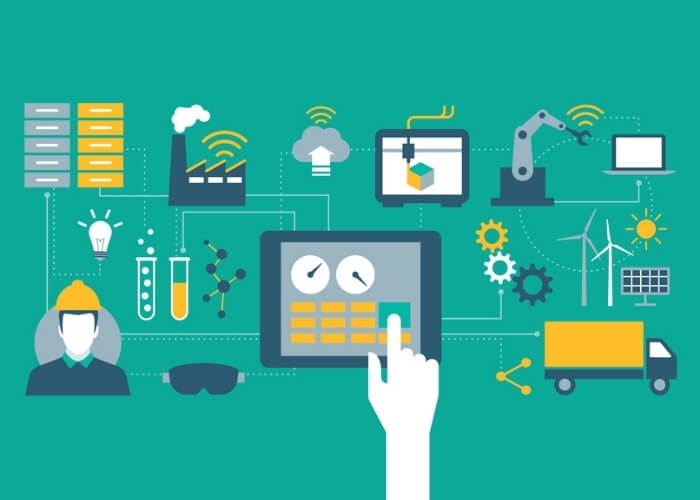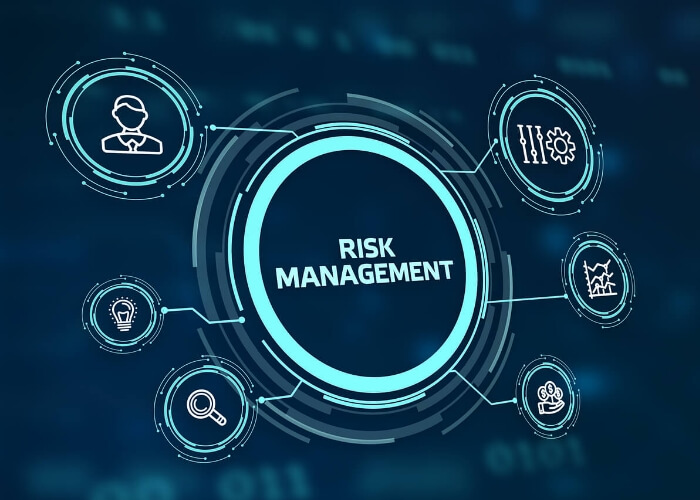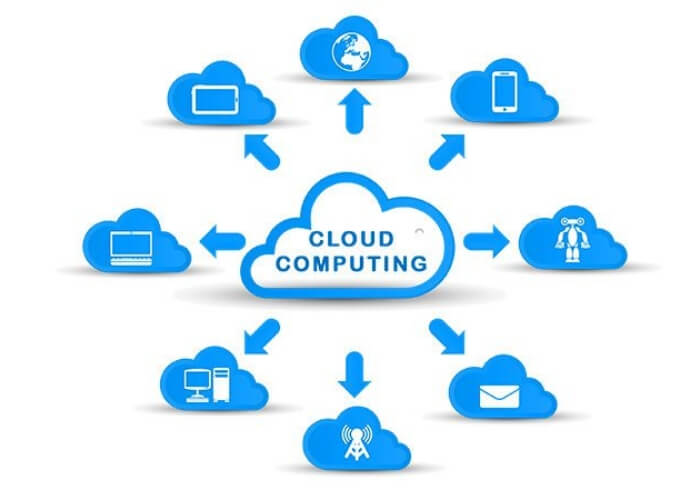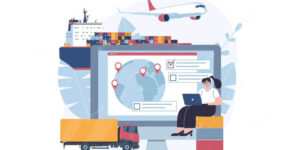
The process of the supply chain is continuously undergoing development. A lot has happened in the supply chain in the past few decades. Moreover, the outbreak of the COVID-19 pandemic has changed the equation tremendously.
Now the most recent developments in supply chain and logistics emphasize the use of intelligent, technology-driven management in order to cut operating costs and improve efficiency.
So, if you’re wondering about the top future trends in supply chain and logistics, then this is the post for you.
In this post, we’ll go over the top 10 future trends in supply chain and logistics, along with their significance for companies operating in the modern era.
So, let’s get started…
Table of Contents
- Supply Chain & Logistics
- Tasks in the Supply Chain and Logistics
- Future Trends in Supply Chain & Logistics
- Supply Chain & Logistics
Supply Chain & Logistics
A supply chain, as the name says, is a network of enterprises and activities that transports a product from the suppliers of raw materials to the final consumers.
The procedures of collecting, transporting, and storing materials along the supply chain and logistics are referred to as logistics. A supply chain, which depends heavily on information technology, logistics, and transportation, may have multiple firms that take care of supply chain management, or a single company may be responsible for the vast majority of the supply chain and logistics for its products.
The notion of logistics was initially developed by the military as a method for supplying troops with weapons and other products necessary for combat; later, this idea was adapted for use in the corporate world.
This method was primarily introduced to simplify the process for all. It includes the transportation of vast amounts of commodities to far-flung areas.
The right supply chain and logistics process not only improves connections with consumers but also increases their loyalty. This, in turn, leads to increased revenue and the recruitment of new clients through positive word of mouth.
Tasks in the Supply Chain and Logistics
Distributors, retailers, and wholesalers are the typical stakeholders in a supply chain. A supply chain is a network of enterprises that work together to create a shared value chain. There are two main processes followed in Supply Chain, namely upstream supply chain and the downstream supply chain. The operations that are connected to the organization’s suppliers are included in the upstream supply chain. These are the parties that are responsible for sourcing the raw material inputs that are then sent to the manufacturer.
The term downstream supply chain refers to the processes that occur after the product has been manufactured, specifically the distribution of the product to the end user. A company is either upstream or downstream according to its location in the supply chain.
Let’s now take a look at the top 10 future trends in supply chain and logistics.
Here we go…
Future Trends in Supply Chain & Logistics
1. The digitization of the supply chain
The process of redesigning logistical procedures through the use of the most recent technological solutions in conjunction with other physical and digital assets is referred to as digitization. The digitization of the supply chain will make supply chain companies adapt to the fast-paced, highly competitive, and omnichannel business climate.

The speed, dynamism, and resiliency of the supply chain operations are all improved as a result of digitization. This, in turn, leads to increased customer responsiveness and, consequently, higher revenue.
Companies can enjoy actual value, greater revenue, and enhanced market valuation if they embrace digitalization.
To effectively capitalize on the potential afforded by digitization, organizations will need to rethink their supply chain strategy from the ground up. It is not enough to just embellish it with modern technologies.
2. Customization
Customization is yet another future trend in Supply Chain & Logistics. Companies can divide their supply chain into distinct sections, each with its own set of customers and goals. Doing so will help them achieve the expected level of customization across the board.
Undoubtedly, mass customization can be difficult to meet, so you’ll need to brainstorm solutions. However, you can tailor your manufacturing services to the specific needs of your business as you develop prototypes and speed up production without sacrificing quality or accuracy.
Personalization will become a breeze as you strengthen the other links in your supply chain. Automating your order processing system by segregating regular orders from customized orders, for example, might make it simpler to manage orders with unique specifications from individual customers. In a nutshell, streamlining your business processes will make customization a cakewalk.
Other Trends: Top UI UX Design Trends: Crafting the Future Art
3. Internet of Things
The Internet of Things or IoT is in the mainstream today. It has revolutionized almost every sector, including logistics. It holds a significant place in the realm of digital transformation.
IoT is a network of interconnected computing devices that enables the movement of data through networks without the need for human intervention. It makes it easier for businesses to keep track of inventory, organize warehouse goods, optimize fleet routes, and cut down on wasted miles.
The Internet of Things can even be utilized to create “smart” warehouses and fleets, which can improve the operational efficacy as well as the data accuracy of numerous parts of your supply chain.
There are several ways to maximize the value of your Internet of Things devices, depending on what kinds of devices you have. Data received by a sensor in your warehouses, for instance, may be used to automate tasks like inventory management and demand forecasting.
4. Artificial Intelligence (AI)
Innovative AI technologies offer a wide range of potential applications in the supply chain, particularly in the warehousing sector. The term “artificial intelligence” (AI) refers to computer programs that aim to simulate human intelligence and are able to “learn” on their own in order to assist humans with more difficult and hard tasks.

Artificial intelligence (AI) is still dependent on human input, but it also makes use of machine learning in order to figure out the next steps on its own, independent of direct human direction.
The supply chain is another industry that has made extensive use of the concepts of robots and automation. It includes using solutions based on gesture recognition rather than keyboards and mouse in the procurement process. There are also things like autonomous vehicles or self-driving cars that fall under this category. These automobiles can navigate without the need for input from a human driver.
5. Coordination & Collaboration
When it comes to the logistics of the supply chain, establishing reliable procurement procedures and more robust partnerships with vendors has to be a top focus.
For example, the procurement department can use the business data on suppliers to improve supply chain decisions, such as supplier evaluation and suggestions of the best business partners to work with. It will help businesses save both time and money.
Additionally, effective cooperation can help analyze risks in the supply chain based on global industrial and political trends as a strategy to prevent or minimize the threat of stock shortages. This will eventually reduce the likelihood of shortages.
Meanwhile, collaboration in the supply chain can expedite internal procedures and prevent overutilization of resources spent on administrative and other time-consuming chores.
6. Blockchain for Tracking & Tracing
Knowing where all products have been and where they are currently stored, as well as their chain of custody, is referred to as track and trace in logistics.
For tracking and tracing, it is necessary to follow a product from its point of origin all the way through its many stages of production, distribution, and sale. In order to guarantee the genuineness of the product, it is essential to monitor its provenance at every step of its journey.
Inefficient paper methods and disparate data systems make track and trace a difficulty for modern supply chains.
Supply chains are vulnerable to issues like lack of visibility, incorrect supply and demand forecasts, human mistakes, counterfeit goods, and regulatory noncompliance because of incompatible data.
Blockchain-based tracking and tracing technology can be used to create apps in which numerous parties can deal directly via a peer-to-peer network without the requirement for a central authority to authenticate transactions.
The network’s transactions are recorded in an immutable and cryptographically secure shared ledger that all users have access to.
Companies in the supply chain can use blockchain to record production updates in a shared ledger that is accessible to all parties. This improves the transparency and accuracy of the data collected. Transactions are time-stamped and always current, allowing businesses to check on the whereabouts of goods at any moment.
Also See: What is Blockchain Technology and How Does it Work?
7. Risk Management
Risk management is vital when it comes to efficient supply chain and logistics. Supply chain risk management is “the execution of strategies to manage both ordinary and unusual risks along the supply chain based on constant risk assessment in order to reduce vulnerability and ensure continuity.”

To put it simply, risk management in the supply chain is a method of preparation for unforeseen occurrences. The growing prevalence of activities such as outsourcing and offshoring, as well as product flexibility, supply chain security, and extensive interconnection throughout the supply chain, further emphasize the need to address potential risks within the supply chain.
8. Supply Chain Resilience
Supply chain resilience is yet another future trend. A robust supply chain is characterized by its resistance and recovery capabilities. This necessitates the capacity to mitigate the majority of supply chain interruptions and significantly minimize their effects. Multiple components of the supply chain may be endangered by operational risk and disruption.
COVID-19 had worldwide and extensive effects on supply chain logistics, suppliers, and labor forces. Other supply chain disruptions may be caused by unplanned competition, unanticipated market developments, or sudden shifts in customer buying preferences.
Maintaining the resilience of supply chains is a must for companies in order to mitigate negative occurrences more quickly than the competition, provide outstanding customer service, and generate value and market share. Effective resilience of supply chains will continue to call for data experts, creative problem-solving strategies, and robust collaboration among global networks that are both highly complex and interdependent.
9. Cybersecurity
Cybersecurity vulnerabilities require an urgent demand for enhanced supply chain security measures. It is essential to keep in mind that cybersecurity involves much more than installing anti-virus software on workplace computers. In the digital age, identifying virtual threats is not an easy task. Moreover, they can be very damaging for companies. Thus these threats must be treated with the same seriousness as any physical security measure.
The most significant supply chain hazards arise at multiple levels, including the physical world, such as server room access or malware-infected gear. Organizations must be aware of every third party with which they deal throughout the supply chain, from maintenance contractors to suppliers. Anyone who has access to the network or systems of the organization poses a risk.
Organizations inside the supply chain must take a proactive, targeted approach to cybersecurity to avoid cybercrimes, data breaches, and monetary losses.
Companies should use stringent security measures, such as Artificial Intelligence. Artificial intelligence (AI) is a powerful tool for enhancing supply chain resilience, particularly in terms of cybersecurity. AI solutions serve as 24/7 virtual security personnel.
10. Cloud-Based Solutions
Cloud-based software solutions have revolutionized almost every sector, and the supply chain is no exception. In order for your company to maintain its competitive edge, you require solutions that are precise, adaptable, and easily available.

Supply chain management can benefit from using models based on software delivered as a service (SaaS). Not only is software as a service trustworthy and safe, but it’s also very effective and convenient. All of the data associated with your company is kept in the cloud. You and your team will always have access to the information you require, regardless of when or where you need it.
The efficacy that SaaS solutions give is vital to assist a firm as it moves into an increasingly fast-paced future.
Wrapping it up…
So, these are the top 10 future trends in supply chain and logistics. These trends in the supply chain can also serve as valuable tools for bolstering your existing supply chain and making it more adaptable and robust.
The integration of technology will be essential to the continued success of supply chains in the future. It is essential to plan ahead for unanticipated changes in the future and be flexible in order to maintain your organization’s competitive advantage and keep up with the times.






